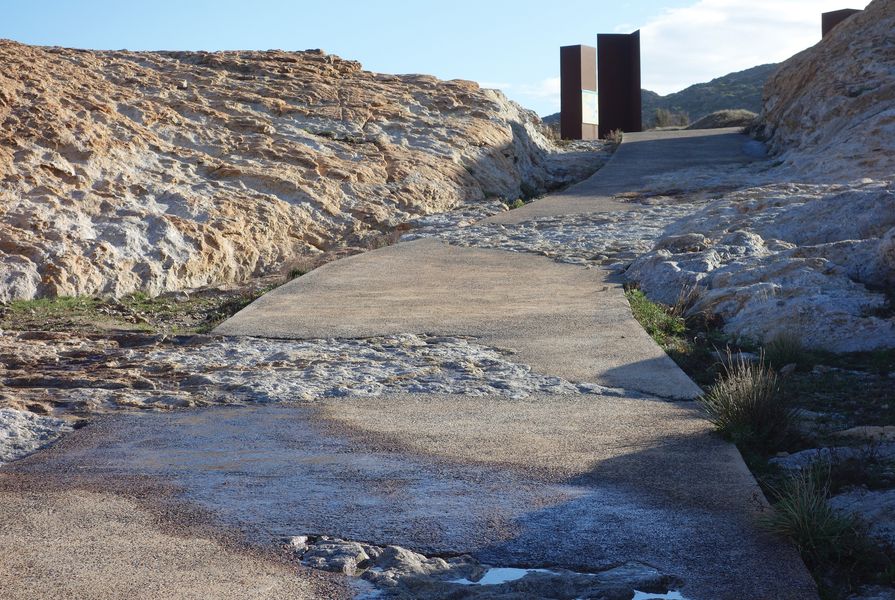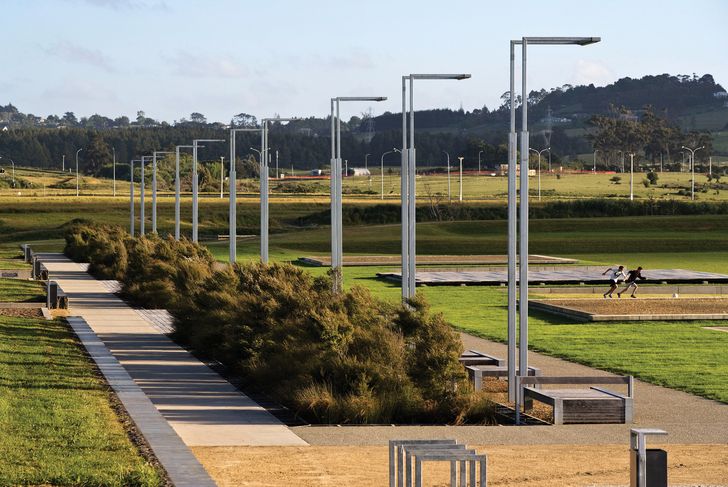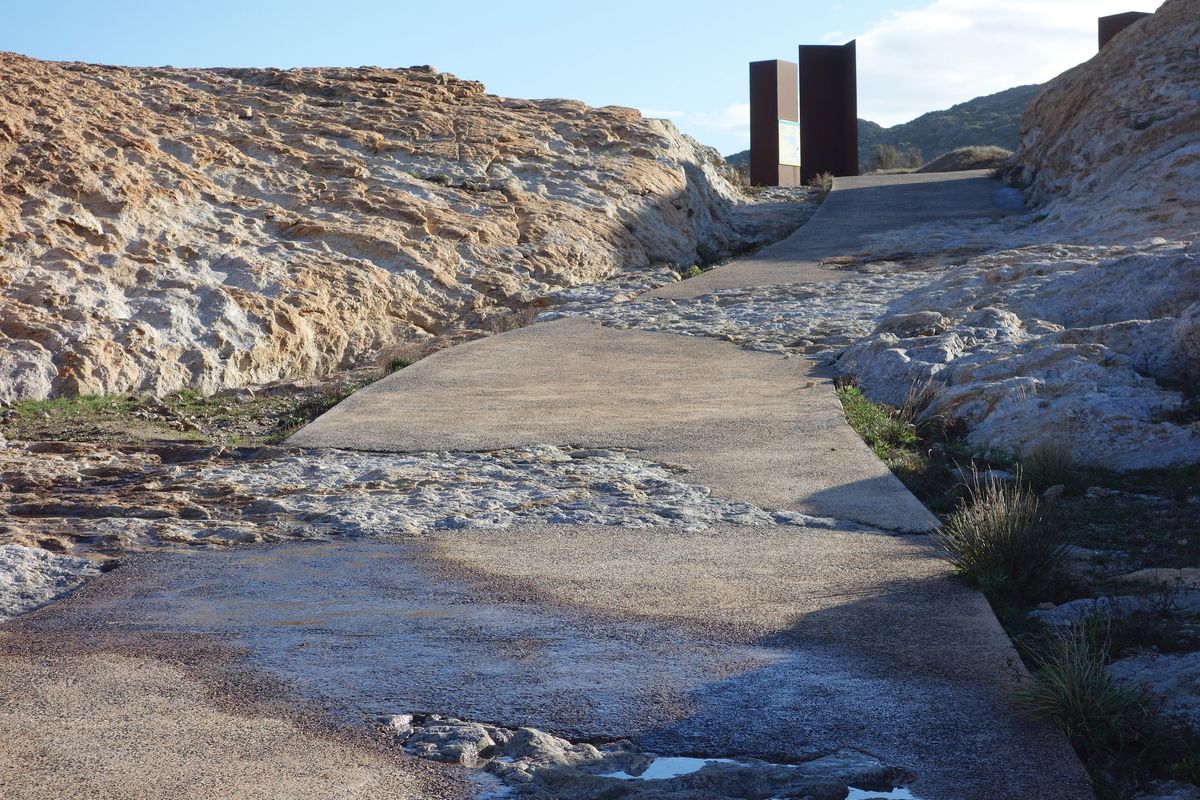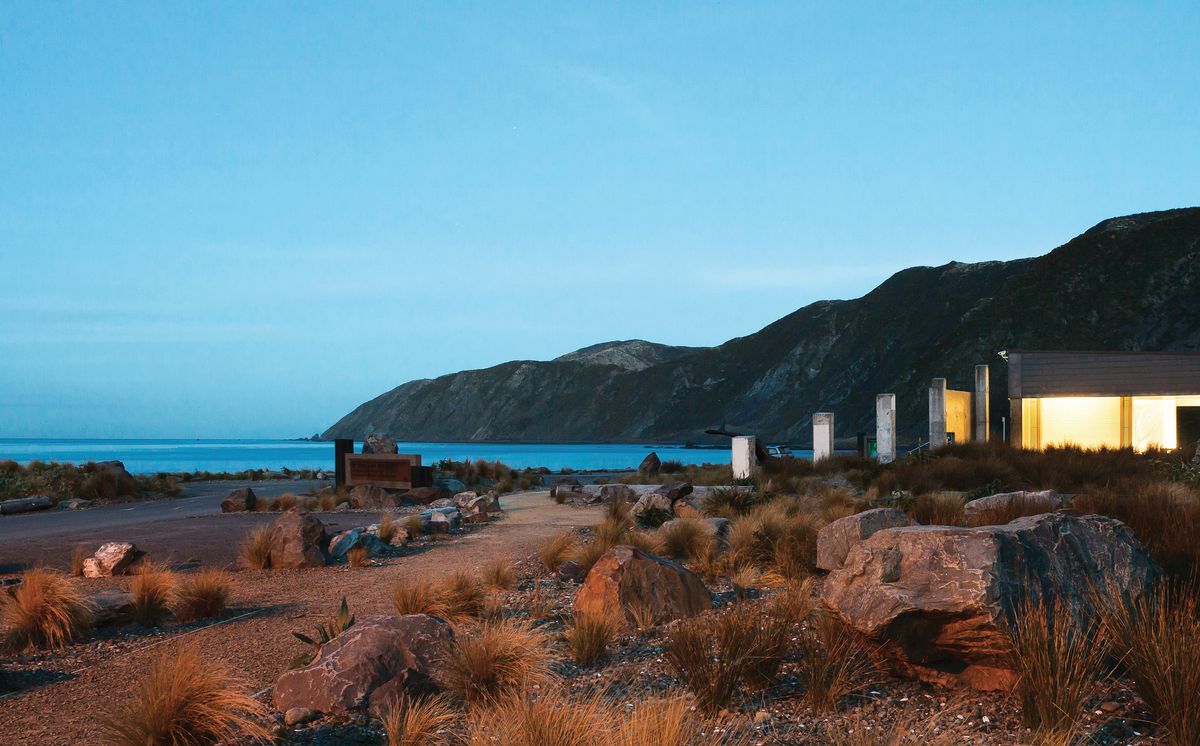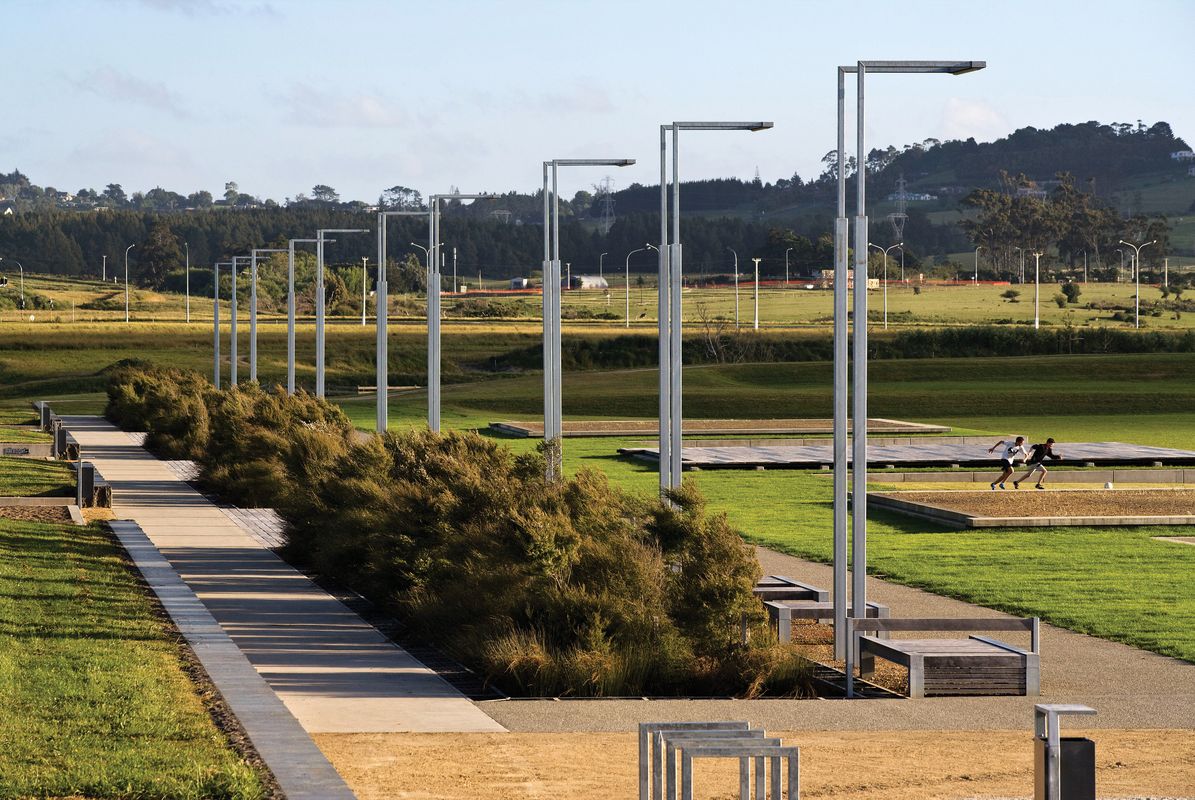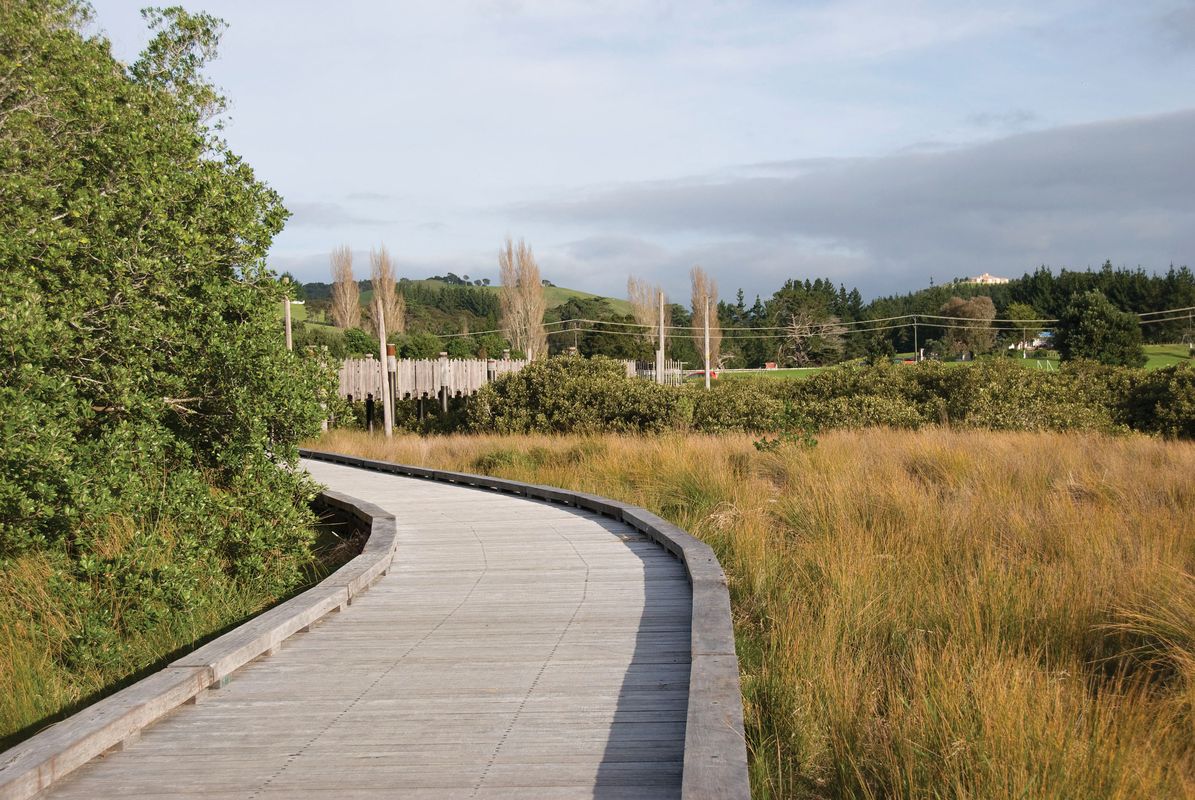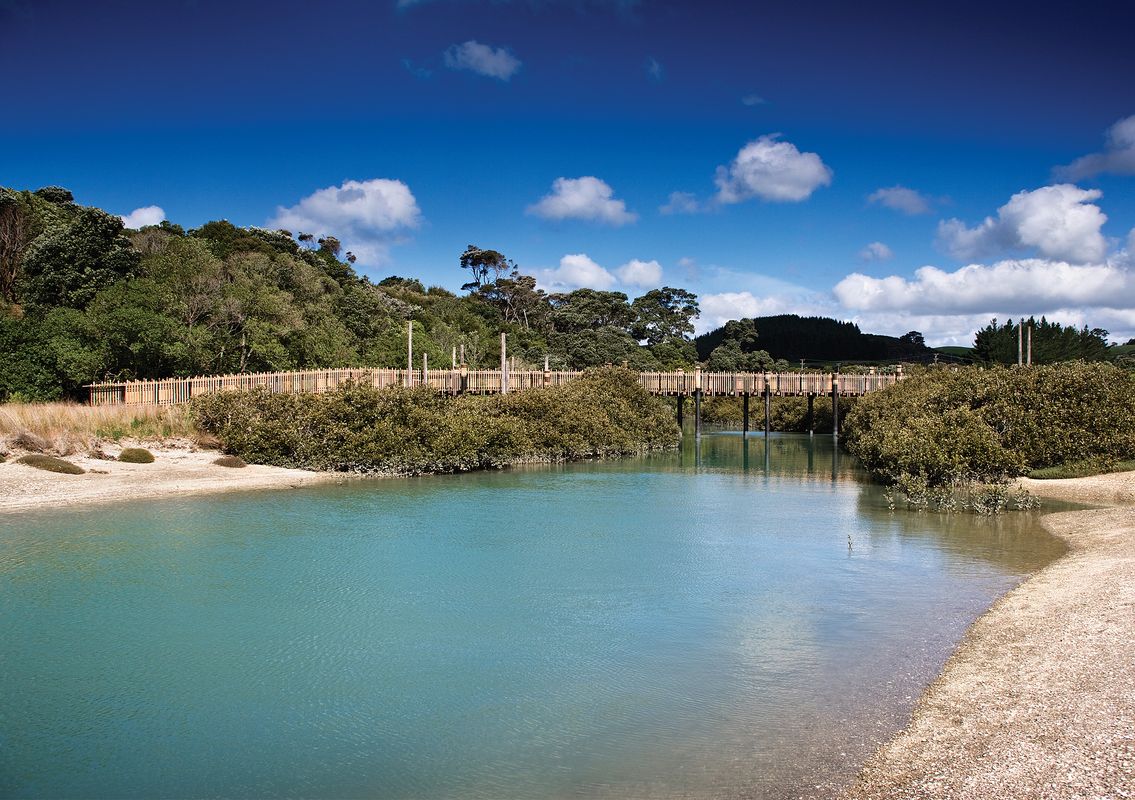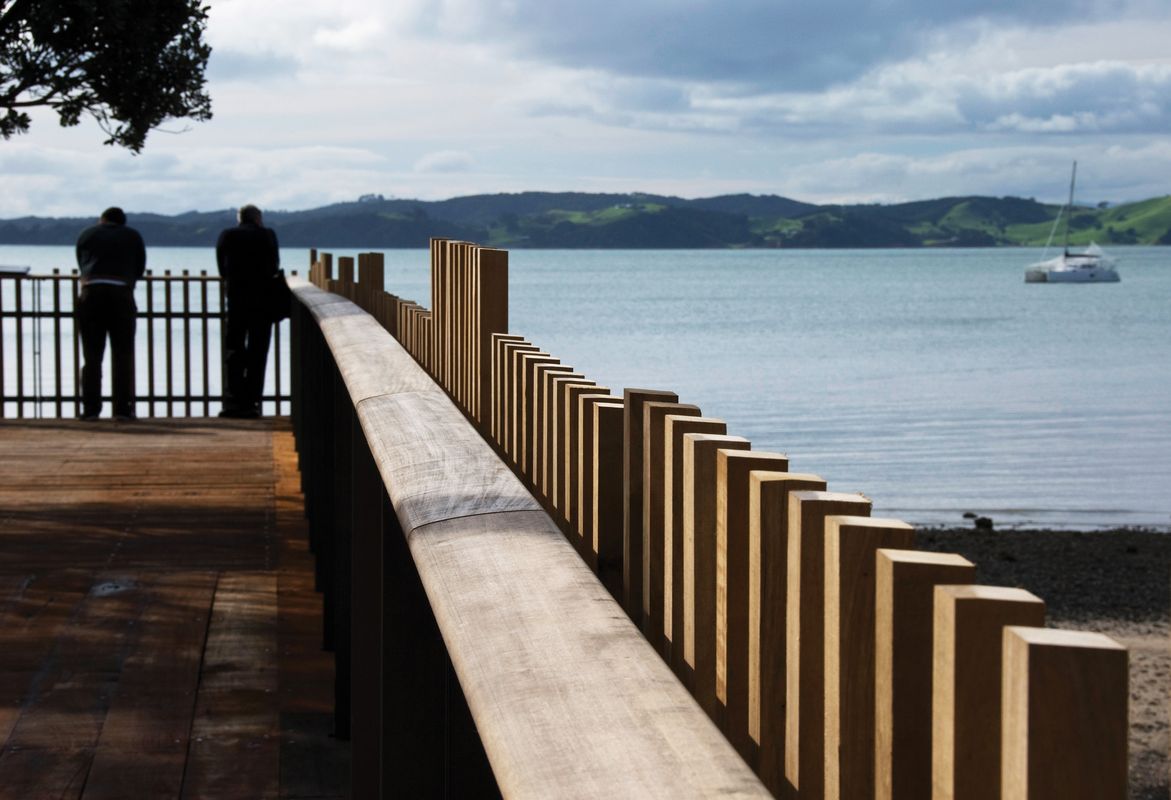Hīkoi is a Māori word for walking and talking. But its meaning is deeper than that: it harbours something about movement, something about community and something about a world view that links land to life to ancestry; we might call it holistic, maybe situationist. Languages often have words that tell secrets about the culture and give suggestions of its landscape. Hīkoi is one of these words.
The landscape in Aotearoa New Zealand has this sort of effect. It is not just present, it is ever-present: moving, haunting, alive. Janet Frame, a local author, contrives characters that are forever running away from, and back to, the landscape’s “undermass” – the place beneath the surface of an apparent reality (Living in the Maniototo, 1979). Vincent Ward, a local filmmaker, portrays the unsettling presence of the New Zealand landscape and the daunting power it has had over its immigrants (for example in Rain of the Children, 2008). For both Māoris and Europeans, settling in this landscape is essentially unsettling.
Some of the most fascinating recent work by landscape practitioners in Aotearoa New Zealand emerges from designers’ deference to this landscape. It’s important because it negates the idea that deference requires abstention – a designer can’t do “nothing” just because the scenery is good. But it’s also important for the opposite reason, because it departs from the idea that landscape architecture has to make things: terraces and amphitheatres and shelters and quirkiness all intervening in this landscape. In New Zealand it’s a malaise spread from an inte continental anti-contextual preoccupation with amenity, abiding by some notion that a landscape architect needs to “add.” But now, some landscape architecture here is about editing. That’s the shift.
The shift comes through collaboration with the looming landscape, rather than from any insertion upon it. Like the hīkoi , the shift is about the direct experience of people being in the landscape rather than about any artefacts that augment or interpret or symbolize the landscape. The shift is also reminiscent of Mart í Franch’s Cap de Creus project in Costa Brava, where the landscape architect took an eraser to the past development and just left its tracery, and a powerful landscape to be in.
Two winning projects at the 2015 New Zealand Institute of Landscape Architects awards show these tendencies. One is Te Kopahou Reserve – Entrance to South Coast by Wellington City Council, which decluttered the accretions on an earthquake-formed landscape, leaving just the designers’ marks among the plantings and the rocky paths. The second is a recent project in East Auckland, where a modest work along the coast between Maraetai and Beachlands expresses this idea, perhaps as well as any. It comes out of the office of Isthmus, which five years ago crafted a beautiful flat plain in Barry Curtis Park in Manukau. Barry Curtis Park has opulent, award-winning playgrounds, wetlands, skate parks and volcano motifs spread across a rolling landscape, but its most telling gesture is a flat grass plain, a counterflow space that is football fields long, sometimes buzzing with cricket or touch footy games, markets and rallies, and sometimes Zen-like empty. Whatever’s happening, it’s an implausibly beautiful place to be in.
Barry Curtis Park in Manukau, New Zealand, designed by Isthmus features a flat grass plain that is left open to interpretation.
Image: Simon Devitt
The Beachlands–Maraetai project is a walkway – just a walkway. Set beside the astounding Hauraki Gulf and its waka highway (waka: a Māori canoe), the twin towns outgrew their weekender status and surrendered their landscape to sprawling suburbanization pressures. Each town suffered the legacy of a car-dominated plan. Each gobbled up land with little regard for community.
Nine years ago the walkway was envisioned as the way to connect the communities, to reconnect the culture with the landscape and the water, and to let the ecosystems of the place breathe again. It is now complete. The designers call it a low-key design – a 2.5-metre-wide path, mostly concrete, sometimes bridge. It threads across six kilometres of coastline that includes beaches and shell paths and mudflats, and around Māori pā sites, heritage farmhouses and weekenders’ boat ramps. It acknowledges the rhythms of the sea and the moods of the northerly storms that flow across the walkways and flush sand out of the plantings. It cleans up the rivers and streams. But it’s hard to get hold of. It’s not photogenic. You can’t take pictures of it, but you can take lots of pictures from it. And it succeeds in rejuvenating the community and culture of the two towns. There’s the shift.
If we called these projects innovative we may just be adding designer superlatives. The word “innovation” is so ubiquitous these days that its meaning is hard to discern. It can’t be far off joining the scrapheap of words like “authentic” and “legible” that designers have rendered meaningless through overuse. But words like hīkoi, that come through an understanding of the specificities of culture and its relationship to land, have the potential to lead us into a new way of thinking, a way of disturbing the system.
The idea of innovation has been revised and redefined in a golden-fleece-like search over the past century. The economist and innovation pioneer Joseph Schumpeter described the distinguishing trait of innovation as “creative destruction,” in which the “new” wipes out the “established.” Rebecca Henderson and Kim Clark recognize slower-moving, “incremental” innovation, where enhancement rather than destruction changes the system. 1 Michael Tushman et al highlighted the important role of the user in innovation: a change in community values is as much an innovation as is a new technology. 2 More recently, and more pertinently to landscape architects, Roberto Verganti pointed out that the process that culminates in society accepting new “meanings” of old technologies is not necessarily led by consumer feedback, but is more often “design-driven.” 3
As New Zealand confronts the idea that the specifics of our dramatic landscape can be better expressed through editing rather than augmentation, that a change to the system can take a long time (like the Beachlands–Maraetai walkway), and that it can use traditional methods (like the hīkoi ) in new ways, we awaken to the potential of the landscape to invigorate and sustain our wellbeing.
1. Rebecca Henderson and Kim Clark, “Architectural Innovation” in Administrative Science Quarterly , vol 35 no 1, 1990, 9–30.
2. Michael Tushman, Philip Anderson and Charles O’Reilly, “Technology Cycles, Innovation Streams, and Ambidextrous Organizations” in Michael Tushman and Philip Anderson (eds), Managing Strategic Innovation and Change: a collection of readings (New York: Oxford University Press, 1997).
3. Roberto Verganti, Design-Driven Innovation (Boston: Harvard Business Press, 2009).
Source

Practice
Published online: 2 May 2016
Words:
Martin Bryant,
Penny Allan
Images:
Isthmus,
Jason Mann,
Penny Allan,
Simon Devitt
Issue
Landscape Architecture Australia, August 2015

